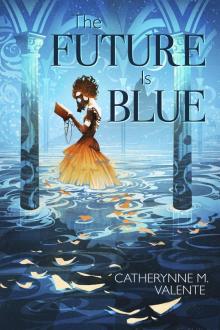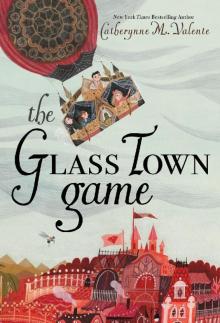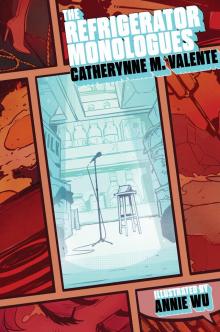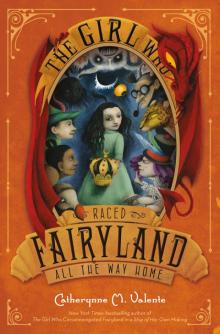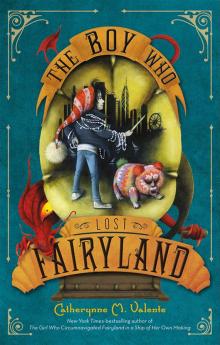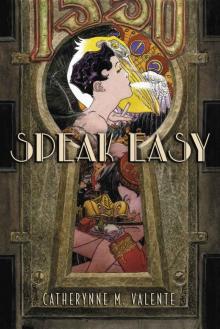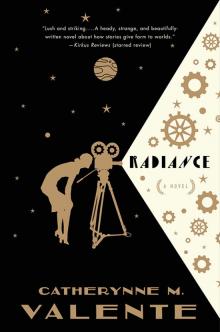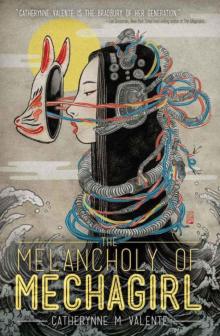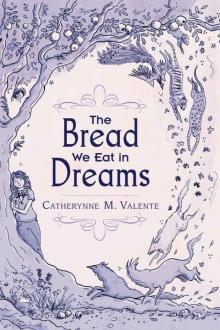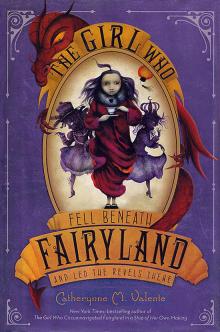


The Diary of a Young Girl
Anne Frank
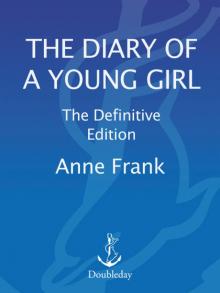
Table of Contents
Title Page
Foreword
First Page
Afterword
Photo Inserts
Copyright
FOREWORD
Anne Frank kept a diary from June 12, 1942, to August 1, 1944. Initially, she wrote it strictly for herself. Then, one day in 1944, Gerrit Bolkestein, a member of the Dutch government in exile, announced in a radio broadcast from London that after the war he hoped to collect eyewitness accounts of the suffering of the Dutch people under the German occupation, which could be made available to the public. As an example, he specifically mentioned letters and diaries.
Impressed by this speech, Anne Frank decided that when the war was over she would publish a book based on her diary. She began rewriting and editing her diary, improving on the text, omitting passages she didn’t think were interesting enough and adding others from memory. At the same time, she kept up her original diary. In the scholarly work The Diary of Anne Frank: The Critical Edition (1989), Anne’s first, unedited diary is referred to as version a, to distinguish it from her second, edited diary, which is known as version b.
The last entry in Anne’s diary is dated August 1, 1944. On August 4, 1944, the eight people hiding in the Secret Annex were arrested. Miep Gies and Bep Voskuijl, the two secretaries working in the building, found Anne’s diaries strewn all over the floor. Miep Gies tucked them away in a desk drawer for safekeeping. After the war, when it became clear that Anne was dead, she gave the diaries, unread, to Anne’s father, Otto Frank.
After long deliberation, Otto Frank decided to fulfill his daughter’s wish and publish her diary. He selected material from versions a and b, editing them into a shorter version later referred to as version c. Readers all over the world know this as The Diary of a Young Girl.
In making his choice, Otto Frank had to bear several points in mind. To begin with, the book had to be kept short so that it would fit in with a series put out by the Dutch publisher. In addition, several passages dealing with Anne’s sexuality were omitted; at the time of the diary’s initial publication, in 1947, it was not customary to write openly about sex, and certainly not in books for young adults. Out of respect for the dead, Otto Frank also omitted a number of unflattering passages about his wife and the other residents of the Secret Annex. Anne Frank, who was thirteen when she began her diary and fifteen when she was forced to stop, wrote without reserve about her likes and dislikes.
When Otto Frank died in 1980, he willed his daughter’s manuscripts to the Netherlands State Institute for War Documentation in Amsterdam. Because the authenticity of the diary had been challenged ever since its publication, the Institute for War Documentation ordered a thorough investigation. Once the diary was proved, beyond a shadow of a doubt, to be genuine, it was published in its entirety, along with the results of an exhaustive study. The Critical Edition contains not only versions a, b and c, but also articles on the background of the Frank family, the circumstances surrounding their arrest and deportation, and the examination into Anne’s handwriting, the document and the materials used.
The Anne Frank—Fonds (Anne Frank Foundation) in Basel (Switzerland), which as Otto Frank’s legal heir had inherited his daughter’s copyrights, then decided to have a new, expanded edition of the diary published for general readers. This new edition in no way affects the integrity of the old one originally edited by Otto Frank, which brought the diary and its message to millions of people. The task of compiling the expanded edition was given to the writer and translator Mirjam Pressler. Otto Frank’s original selection has now been supplemented with passages from Anne’s a and b versions. Mirjam Pressler’s definitive edition, approved by the Anne Frank—Fonds, contains approximately 30 percent more material and is intended to give the reader more insight into the world of Anne Frank.
In 1998 the existence of five previously unknown pages of the diary came to light. Now, with the permission of the Anne Frank—Fonds in Basel, a long passage dated February 8, 1944, has been added to the end of the already-existing entry of that date. A short alternative to the entry of June 20, 1942, has not been included here because a more detailed version of it is already part of the diary. Furthermore, in line with recent findings, the entry of November 7, 1942, has been moved to October 30, 1943. For more information, the reader is referred to the revised Critical Edition.
In writing her second version (b), Anne invented pseudonyms for the people who would appear in her book. She initially wanted to call herself Anne Aulis, and later Anne Robin. Otto Frank opted to call his family by their own names and to follow Anne’s wishes with regard to the others. Over the years, the identity of the people who helped the families in the Secret Annex has become common knowledge. In this edition, the helpers are now referred to by their real names, as they so justly deserve to be. All other persons are named in accordance with the pseudonyms in The Critical Edition. The Institute for War Documentation has arbitrarily assigned initials to those persons wishing to remain anonymous.
The real names of the other people hiding in the Secret Annex are:
THE VAN PELS FAMILY
(from Osnabrück, Germany):
Auguste van Pels (born September 9, 1900)
Hermann van Pels (born March 31, 1898)
Peter van Pels (born November 8, 1926)
Called by Anne, in her manuscript: Petronella, Hans and Alfred van Daan; and in the book: Petronella, Hermann and Peter van Daan.
FRITZ PFEFFER
(born April 30, 1889, in Giessen, Germany):
Called by Anne, in her manuscript and in the book: Albert Dussel.
The reader may wish to bear in mind that much of this edition is based on the b version of Anne’s diary, which she wrote when she was around fifteen years old. Occasionally, Anne went back and commented on a passage she had written earlier. These comments are clearly marked in this edition. Naturally, Anne’s spelling and linguistic errors have been corrected. Otherwise, the text has basically been left as she wrote it, since any attempts at editing and clarification would be inappropriate in a historical document.
I hope I will be able to confide everything to you, as I have never been able to confide in anyone, and I hope you will be a great source of comfort and support.
JUNE 12, 1942
I hope I will be able to confide everything to you, as I have never been able to confide in anyone, and I hope you will be a great source of comfort and support.
COMMENT ADDED BY ANNE ON SEPTEMBER 28, 1942:
So far you truly have been a great source of comfort to me, and so has Kitty, whom I now write to regularly. This way of keeping a diary is much nicer, and now I can hardly wait for those moments when I’m able to write in you.
Oh, I’m so glad I brought you along!
SUNDAY, JUNE 14, 1942
I’ll begin from the moment I got you, the moment I saw you lying on the table among my other birthday presents. (I went along when you were bought, but that doesn’t count.)
On Friday, June 12, I was awake at six o’clock, which isn’t surprising, since it was my birthday. But I’m not allowed to get up at that hour, so I had to control my curiosity until quarter to seven. When I couldn’t wait any longer, I went to the dining room, where Moortje (the cat) welcomed me by rubbing against my legs.
A little after seven I went to Daddy and Mama and then to the living room to open my presents, and you were the first thing I saw, maybe one of my nicest presents. Then a bouquet of roses, some peonies and a potted plant. From Daddy and Mama I got a blue blouse, a game, a bottle of grape juice, which to my mind tastes a bit like wine (after all, wine is made from grapes), a puzzle, a jar of cold cream, 2.50 guilders and a gift certificate for two books.
I got another book as well, Camera Obscura (but Margot already has it, so I exchanged mine for something else), a platter of homemade cookies (which I made myself, of course, since I’ve become quite an expert at baking cookies), lots of candy and a strawberry tart from Mother. And a letter from Grammy, right on time, but of course that was just a coincidence.
Then Hanneli came to pick me up, and we went to school. During recess I passed out cookies to my teachers and my class, and then it was time to get back to work. I didn’t arrive home until five, since I went to gym with the rest of the class. (I’m not allowed to take part because my shoulders and hips tend to get dislocated.) As it was my birthday, I got to decide which game my classmates would play, and I chose volleyball. Afterward they all danced around me in a circle and sang “Happy Birthday.” When I got home, Sanne Ledermann was already there. Ilse Wagner, Hanneli Goslar and Jacqueline van Maarsen came home with me after gym, since we’re in the same class. Hanneli and Sanne used to be my two best friends. People who saw us together used to say, “There goes Anne, Hanne and Sanne.” I only met Jacqueline van Maarsen when I started at the Jewish Lyceum, and now she’s my best friend. Ilse is Hanneli’s best friend, and Sanne goes to another school and has friends there.
They gave me a beautiful book, Dutch Sagas and Legends, but they gave me Volume II by mistake, so I exchanged two other books for Volume I. Aunt Helene brought me a puzzle, Aunt Stephanie a darling brooch and Aunt Leny a terrific book: Daisy Goes to the Mountains.
This morning I lay in the bathtub thinking how wonderful it would be if I had a dog like Rin Tin Tin. I’d call him Rin Tin Tin too, and I’d take him to school with me, where he could stay in the janitor’s room or by the bicycle racks when the weather was good.
MONDAY, JUNE 15, 1942
I had my birthday party on Sunday afternoon. The Rin Tin Tin movie was a big hit with my classmates. I got two brooches, a bookmark and two books.
I’ll start by saying a few things about my school and my class, beginning with the students.
Betty Bloemendaal looks kind of poor, and I think she probably is. She lives on some obscure street in West Amsterdam, and none of us know where it is. She does very well at school, but that’s because she works so hard, not because she’s so smart. She’s pretty quiet.
Jacqueline van Maarsen is supposedly my best friend, but I’ve never had a real friend. At first I thought Jacque would be one, but I was badly mistaken.
D.Q.1 is a very nervous girl who’s always forgetting things, so the teachers keep assigning her extra homework as punishment. She’s very kind, especially to G.Z.
E.S. talks so much it isn’t funny. She’s always touching your hair or fiddling with your buttons when she asks you something. They say she can’t stand me, but I don’t care, since I don’t like her much either.
Henny Mets is a nice girl with a cheerful disposition, except that she talks in a loud voice and is really childish when we’re playing outdoors. Unfortunately, Henny has a girlfriend named Beppy who’s a bad influence on her because she’s dirty and vulgar.
J.R.—I could write a whole book about her. J. is a detestable, sneaky, stuck-up, two-faced gossip who thinks she’s so grown-up. She’s really got Jacque under her spell, and that’s a shame. J. is easily offended, bursts into tears at the slightest thing and, to top it all off, is a terrible show-off. Miss J. always has to be right. She’s very rich, and has a closet full of the most adorable dresses that are way too old for her. She thinks she’s gorgeous, but she’s not. J. and I can’t stand each other.
Ilse Wagner is a nice girl with a cheerful disposition, but she’s extremely finicky and can spend hours moaning and groaning about something. Ilse likes me a lot. She’s very smart, but lazy.
Hanneli Goslar, or Lies as she’s called at school, is a bit on the strange side. She’s usually shy—outspoken at home, but reserved around other people. She blabs whatever you tell her to her mother. But she says what she thinks, and lately I’ve come to appreciate her a great deal.
Nannie van Praag-Sigaar is small, funny and sensible. I think she’s nice. She’s pretty smart. There isn’t much else you can say about Nannie.
Eefje de Jong is, in my opinion, terrific. Though she’s only twelve, she’s quite the lady. She acts as if I were a baby. She’s also very helpful, and I like her.
G.Z. is the prettiest girl in our class. She has a nice face, but is kind of dumb. I think they’re going to hold her back a year, but of course I haven’t told her that.
COMMENT ADDED BY ANNE AT A LATER DATE:
To my great surprise, G.Z. wasn’t held back a year after all.
And sitting next to G.Z. is the last of us twelve girls, me.
There’s a lot to be said about the boys, or maybe not so much after all.
Maurice Coster is one of my many admirers, but pretty much of a pest.
Sallie Springer has a filthy mind, and rumor has it that he’s gone all the way. Still, I think he’s terrific, because he’s very funny.
Emiel Bonewit is G.Z.’s admirer, but she doesn’t care. He’s pretty boring.
Rob Cohen used to be in love with me too, but I can’t stand him anymore. He’s an obnoxious, two-faced, lying, sniveling little goof who has an awfully high opinion of himself.
Max van de Velde is a farm boy from Medemblik, but a decent sort, as Margot would say.
Herman Koopman also has a filthy mind, just like Jopie de Beer, who’s a terrible flirt and absolutely girl-crazy.
Leo Blom is Jopie de Beer’s best friend, but has been ruined by his dirty mind.
Albert de Mesquita came from the Montessori School and skipped a grade. He’s really smart.
Leo Slager came from the same school, but isn’t as smart.
Ru Stoppelmon is a short, goofy boy from Almelo who transferred to this school in the middle of the year.
C.N. does whatever he’s not supposed to.
Jacques Kocernoot sits behind us, next to C., and we (G. and I) laugh ourselves silly.
Harry Schaap is the most decent boy in our class. He’s nice.
Werner Joseph is nice too, but all the changes taking place lately have made him too quiet, so he seems boring.
Sam Salomon is one of those tough guys from across the tracks. A real brat. (Admirer!)
Appie Riem is pretty Orthodox, but a brat too.
SATURDAY, JUNE 20, 1942
Writing in a diary is a really strange experience for someone like me. Not only because I’ve never written anything before, but also because it seems to me that later on neither I nor anyone else will be interested in the musings of a thirteen-year-old schoolgirl. Oh well, it doesn’t matter. I feel like writing, and I have an even greater need to get all kinds of things off my chest.
“Paper has more patience than people.” I thought of this saying on one of those days when I was feeling a little depressed and was sitting at home with my chin in my hands, bored and listless, wondering whether to stay in or go out. I finally stayed where I was, brooding. Yes, paper does have more patience, and since I’m not planning to let anyone else read this stiff-backed notebook grandly referred to as a “diary,” unless I should ever find a real friend, it probably won’t make a bit of difference.
Now I’m back to the point that prompted me to keep a diary in the first place: I don’t have a friend.
Let me put it more clearly, since no one will believe that a thirteen-year-old girl is completely alone in the world. And I’m not. I have loving parents and a sixteen-year-old sister, and there are about thirty people I can call friends. I have a throng of admirers who can’t keep their adoring eyes off me and who sometimes have to resort to using a broken pocket mirror to try and catch a glimpse of me in the classroom. I have a family, loving aunts and a good home. No, on the surface I seem to have everything, except my one true friend. All I think about when I’m with friends is having a good time. I can’t bring myself to talk about anything but ordinary everyday things. We don’t seem to be able to get any closer, a
nd that’s the problem. Maybe it’s my fault that we don’t confide in each other. In any case, that’s just how things are, and unfortunately they’re not liable to change. This is why I’ve started the diary.
To enhance the image of this long-awaited friend in my imagination, I don’t want to jot down the facts in this diary the way most people would do, but I want the diary to be my friend, and I’m going to call this friend Kitty.
Since no one would understand a word of my stories to Kitty if I were to plunge right in, I’d better provide a brief sketch of my life, much as I dislike doing so.
My father, the most adorable father I’ve ever seen, didn’t marry my mother until he was thirty-six and she was twenty-five. My sister Margot was born in Frankfurt am Main in Germany in 1926. I was born on June 12, 1929. I lived in Frankfurt until I was four. Because we’re Jewish, my father immigrated to Holland in 1933, when he became the Managing Director of the Dutch Opekta Company, which manufactures products used in making jam. My mother, Edith Holländer Frank, went with him to Holland in September, while Margot and I were sent to Aachen to stay with our grandmother. Margot went to Holland in December, and I followed in February, when I was plunked down on the table as a birthday present for Margot.
I started right away at the Montessori nursery school. I stayed there until I was six, at which time I started first grade. In sixth grade my teacher was Mrs. Kuperus, the principal. At the end of the year we were both in tears as we said a heartbreaking farewell, because I’d been accepted at the Jewish Lyceum, where Margot also went to school.
Our lives were not without anxiety, since our relatives in Germany were suffering under Hitler’s anti-Jewish laws. After the pogroms in 1938 my two uncles (my mother’s brothers) fled Germany, finding safe refuge in North America. My elderly grandmother came to live with us. She was seventy-three years old at the time.

